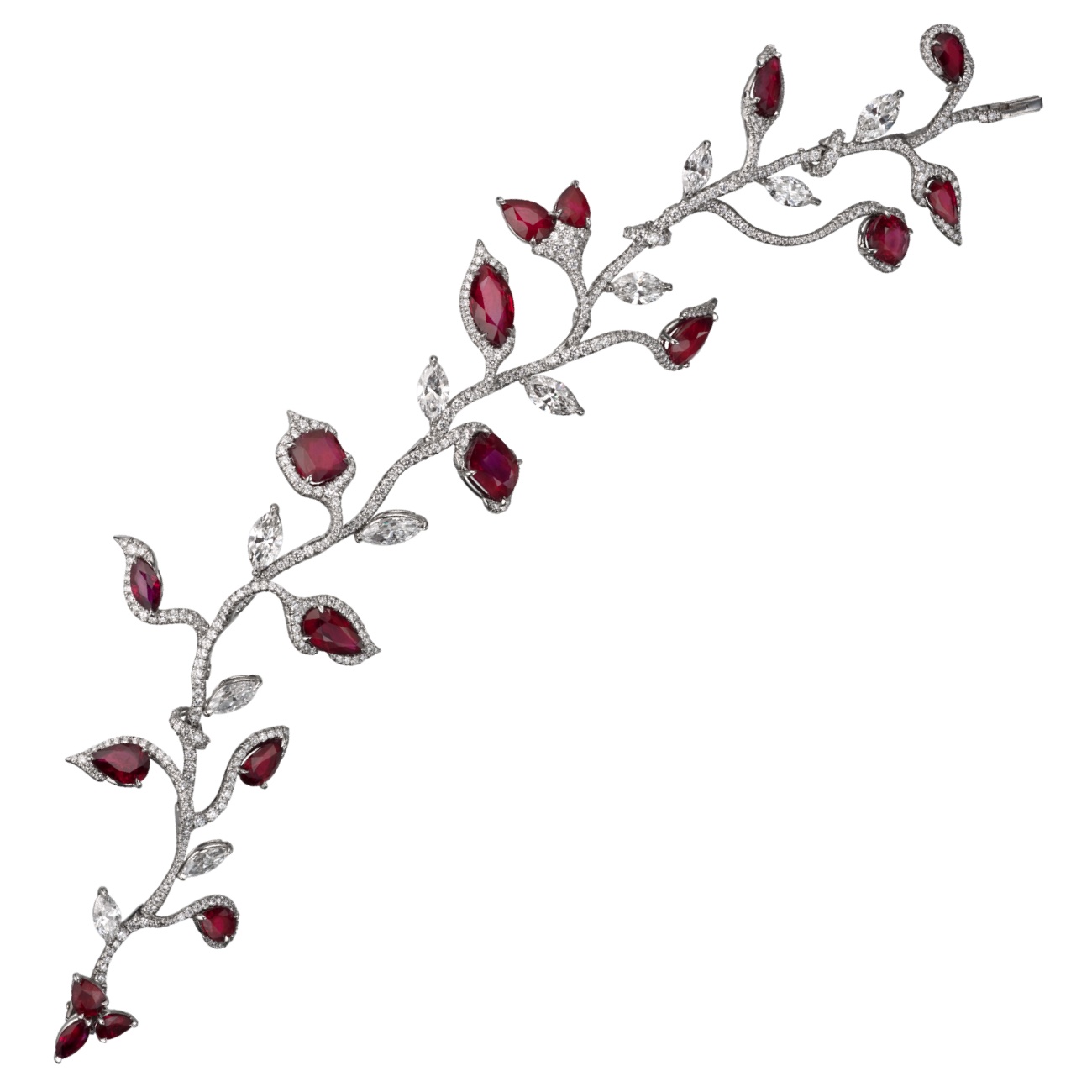
RUBY: July Birthstone

ROMANCE, HISTORY & LORE
Crimson. Carmine. Scarlet. Vermillion. No matter what shade, Ruby has always been defined by a single characteristic – its radiant red color. For thousands of years, the ancient Hindus regarded the Ruby as “The King of Gems.” The Bible celebrates Ruby as the most precious of gemstones. Throughout human history, the Ruby has been associated with fire and blood; a symbol of passion, courage, love, and romance that endures.
ORIGINS
India was classically regarded as the Ruby’s country of origin for more than two thousand years. Recently, Sri Lanka, Pakistan, and Afghanistan have exposed substantial Ruby deposits. In Southeast Asia, Myanmar, Thailand, Cambodia, and Vietnam have also been long regarded as sources of fine Rubies.


Over the last half-century, Rubies have been discovered in East Africa and Madagascar. The United States holds two small deposits in North Carolina and Montana.

SELECTING A STONE
Natural Rubies are among the most valuable of all gemstones, and especially coveted as the birthstone for July. Particularly in sizes above 3 carats, Rubies are far rarer than comparably sized diamonds.
The finest Rubies possess two essential qualities. The first is a pure, deep red sustained evenly throughout the gem. Color may vary from slightly orange to violet and from light to dark in depth. If a gemstone is pinkish, it is classified as a sapphire, Ruby’s “sister” gem.

The second essential quality is a sensitivity to ultraviolet light, due to the presence of chromium in the gemstone, that makes the gem appear to glow in an almost ember-like way. In addition to color, size has the largest impact on the price of a Ruby. Rubies above 3 carats are incredibly rare and extremely valuable. Because of their rarity and small size, most Ruby jewelry is set with small gemstones. Second only to diamond, Ruby, 9 on Moh’s Scale of hardness, is among the hardest of all gems. They resist scratching, breaking, and chipping, and make beautiful gemstones for rings or bracelets.


ENHANCEMENTS
Because perfect Rubies are rarely found in nature, most are heat treated to enhance their color and clarity. Heat treatment is a permanent enhancement that will withstand everyday wear. As with any gemstone, the enhancements or treatments a Ruby undergoes should be disclosed on its bill of sale.

CARE
As a durable gemstone with a hardness of 9, Rubies do not demand particular care. For treated and untreated Rubies, the safest cleaning method is using a solution of warm water and gentle dish detergent. Allow the piece to soak for a few minutes, lightly scrub with a soft brush, and let dry on a soft cloth. As with other fine jewelry, remove Rubies before bedtime. For treated and untreated rubies, the safest cleaning method is using a solution of warm water and gentle dish detergent. Allow the piece to soak for a few minutes, lightly scrub with a soft brush, and let dry on a soft cloth. As with other fine jewelry, remove rubies before bedtime.

